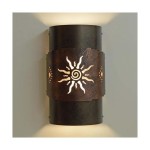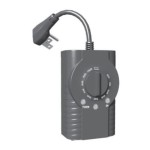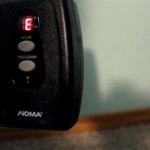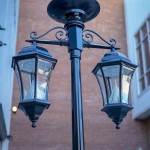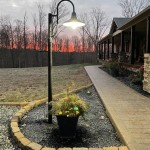How to Fix an Outdoor Light Sensor
Outdoor light sensors are valuable components of home security and energy efficiency. They automatically control outdoor lighting, turning lights on at dusk and off at dawn. This functionality not only enhances safety by illuminating pathways and deterring potential intruders but also saves electricity by ensuring lights are only active when necessary. However, like any electronic device exposed to the elements, light sensors can malfunction. Addressing these malfunctions promptly is crucial to maintaining the intended benefits.
Diagnosing the problem is the first step in fixing an outdoor light sensor. Common issues include the light not turning on at dusk, the light remaining on during the day, flickering lights, or the sensor failing to respond at all. These issues can stem from various sources, including wiring problems, faulty sensor components, incorrect settings, or obstruction of the sensor's view of ambient light.
Understanding Common Problems
Several common issues can disrupt the performance of an outdoor light sensor. Identifying these problems is essential for effective troubleshooting and repair. A systematic approach to diagnosis will save time and effort in the long run.
Light Not Turning On at Dusk: This is a frequent complaint. It indicates that the sensor is not detecting the decrease in ambient light. Potential causes include:
- Burned-out bulb: The simplest cause could be a dead light bulb. Replacing the bulb should be the first step in troubleshooting.
- Power supply issues: Check the circuit breaker connected to the light fixture. A tripped breaker will cut off power to both the sensor and the light.
- Sensor malfunction: The sensor itself may be damaged or faulty, preventing it from accurately detecting light levels.
- Incorrect wiring: If the sensor was recently installed or the wiring has been altered, incorrect wiring connections can prevent the sensor from functioning correctly.
- Obstructed sensor: Objects blocking the sensor's view of ambient light can prevent it from triggering the light.
Light Staying On During the Day: This suggests the sensor is not registering sufficient daylight to turn the light off. Possible causes include:
- Sensor malfunction: The sensor may be stuck in an "on" state, failing to respond to increasing light levels.
- Incorrect sensitivity settings: Some sensors have adjustable sensitivity settings. If the sensitivity is set too low, the sensor may not register sufficient daylight to turn off the light.
- Shadows or insufficient light exposure: The sensor may be located in a consistently shaded area that doesn't receive enough direct sunlight to trigger the "off" function.
- Wiring issues: Although less common, incorrect wiring can also cause the light to remain on.
Flickering Lights: Flickering lights can be caused by several factors, some related to the sensor and others related to the light fixture itself.
- Loose wiring: Loose connections in the wiring can cause intermittent power flow, resulting in flickering.
- Faulty light bulb: A dying or incompatible light bulb can cause flickering.
- Voltage fluctuations: Fluctuations in the electrical supply can lead to flickering, particularly with sensitive LED bulbs.
- Sensor malfunction: In rare cases, a malfunctioning sensor can send erratic signals to the light, causing it to flicker.
Complete Sensor Failure: If the sensor is unresponsive, not activating the light at all, the issue is likely a more significant malfunction.
- Power supply issues: The same initial diagnostic step of checking the circuit breaker applies.
- Faulty sensor: The sensor itself may have failed due to age, damage, or manufacturing defect.
- Wiring problems: Damaged, corroded, or disconnected wires can prevent the sensor from receiving power or sending signals to the light.
Troubleshooting and Repair Steps
Once the potential problem areas have been identified, a systematic approach to troubleshooting and repair is necessary. Safety should be paramount during any electrical work, and it may be necessary to consult a qualified electrician for complex issues.
Safety Precautions: Before starting any work, ensure the power to the light fixture is turned off at the circuit breaker. This is crucial to prevent electrical shock. Verify the power is off using a non-contact voltage tester.
Visual Inspection: Begin with a thorough visual inspection of the sensor and the surrounding area.
- Check the sensor for any visible damage, such as cracks, broken components, or signs of water damage.
- Inspect the wiring for any signs of damage, corrosion, or loose connections. Look for exposed wires or frayed insulation.
- Ensure the sensor is not obstructed by any objects, such as plants, debris, or other fixtures. Clean the sensor lens with a soft cloth to remove any dirt or grime.
Checking the Bulb and Power Supply: Rule out the simplest causes first.
- Replace the light bulb with a new, known-good bulb. Ensure the bulb is compatible with the fixture and voltage requirements.
- Verify the circuit breaker connected to the light fixture is not tripped. Reset the breaker if necessary. If the breaker trips repeatedly, investigate the underlying cause, as it could indicate a short circuit.
- Use a multimeter to check the voltage at the light fixture. If there is no voltage, the problem lies in the wiring or the circuit breaker.
Testing and Adjusting Sensor Settings: Some sensors have adjustable settings that can affect their performance.
- Locate the sensitivity adjustment dial on the sensor. Experiment with different settings to see if it resolves the issue. Start with a higher sensitivity setting (more sensitive to light) if the light is not turning on at dusk. Reduce the sensitivity if the light is staying on during the day.
- If the sensor has a test mode, use it to verify the sensor's functionality. The test mode typically simulates darkness and should activate the light.
Wiring Inspection and Repair: Carefully examine the wiring connections to the sensor and the light fixture.
- Ensure all wires are securely connected to their respective terminals. Loose connections can cause intermittent problems.
- If you find any corroded or damaged wires, replace them with new wires of the same gauge. Use appropriate wire connectors to ensure secure and weatherproof connections.
- Consult the wiring diagram for the sensor and the light fixture to verify the correct wiring configuration. Incorrect wiring can prevent the sensor from functioning properly.
Replacing the Sensor: If all other troubleshooting steps fail, the sensor itself may be faulty and require replacement.
- Purchase a new sensor that is compatible with your light fixture and electrical system.
- Turn off the power to the light fixture at the circuit breaker.
- Carefully disconnect the old sensor from the wiring, noting the wire connections.
- Connect the new sensor to the wiring, following the wiring diagram.
- Mount the new sensor securely to the light fixture.
- Turn the power back on at the circuit breaker and test the sensor's functionality.
Addressing Specific Sensor Types
Outdoor light sensors come in various designs, each with its own characteristics. Some common types include photocell sensors, motion-activated sensors with light-sensing capabilities, and timer-based sensors with light-sensing overrides. The specific troubleshooting steps may vary depending on the sensor type.
Photocell Sensors: These are the most common type and operate solely based on ambient light levels. The troubleshooting steps outlined above are generally applicable to photocell sensors. Pay particular attention to the sensor's sensitivity settings and ensure it is not obstructed.
Motion-Activated Sensors with Light-Sensing Capabilities: These sensors combine motion detection with light sensing. They only activate the light when motion is detected and the ambient light is below a certain threshold. When troubleshooting these sensors, consider the following:
- Check the motion detection range and sensitivity settings. If the range is too short or the sensitivity is too low, the sensor may not detect motion effectively.
- Ensure the sensor's view is not obstructed by any objects that could interfere with motion detection.
- Verify the light-sensing component is functioning correctly. If the sensor is set to only activate the light at night but is triggering during daylight hours, the light-sensing component may be faulty.
Timer-Based Sensors with Light-Sensing Overrides: These sensors use a timer to control the light's operation, but the light sensor can override the timer if it detects sufficient daylight. For example, the timer may be set to turn on the light at a specific time, but the light sensor will prevent the light from turning on if it's still daylight.
- Ensure the timer is set correctly and the light sensor is enabled.
- Verify the light sensor is functioning correctly. If the sensor is set to override the timer during daylight hours but is not doing so, the light-sensing component may be faulty.
When replacing a sensor, it is critical to choose a model that is compatible with the existing light fixture and electrical system. Check the voltage and wattage requirements of the light fixture and select a sensor that meets those specifications. Also, consider the sensor's environmental rating. Outdoor sensors should be weatherproof and designed to withstand exposure to the elements.

Motion Sensor Lights Tips To Reset Detector

How To Troubleshoot Motion Detector Lights Solutions For Every Problem

Light Sensor Test Trouble Shooting

How To Install Replace Outdoor Light Easy Simple

Motion Light Sensor Replacement

How To Reset A Motion Sensor Light Lighting And Ceiling Fans The Home Depot

How To Reset A Motion Sensor Light Lighting And Ceiling Fans The Home Depot

How To Adjust Your Sensor Light Metro Electrical 24 Hour Electricians

How To Install Security Lights Diy Family Handyman

How To Troubleshoot Motion Detector Lights Solutions For Every Problem
Related Posts
